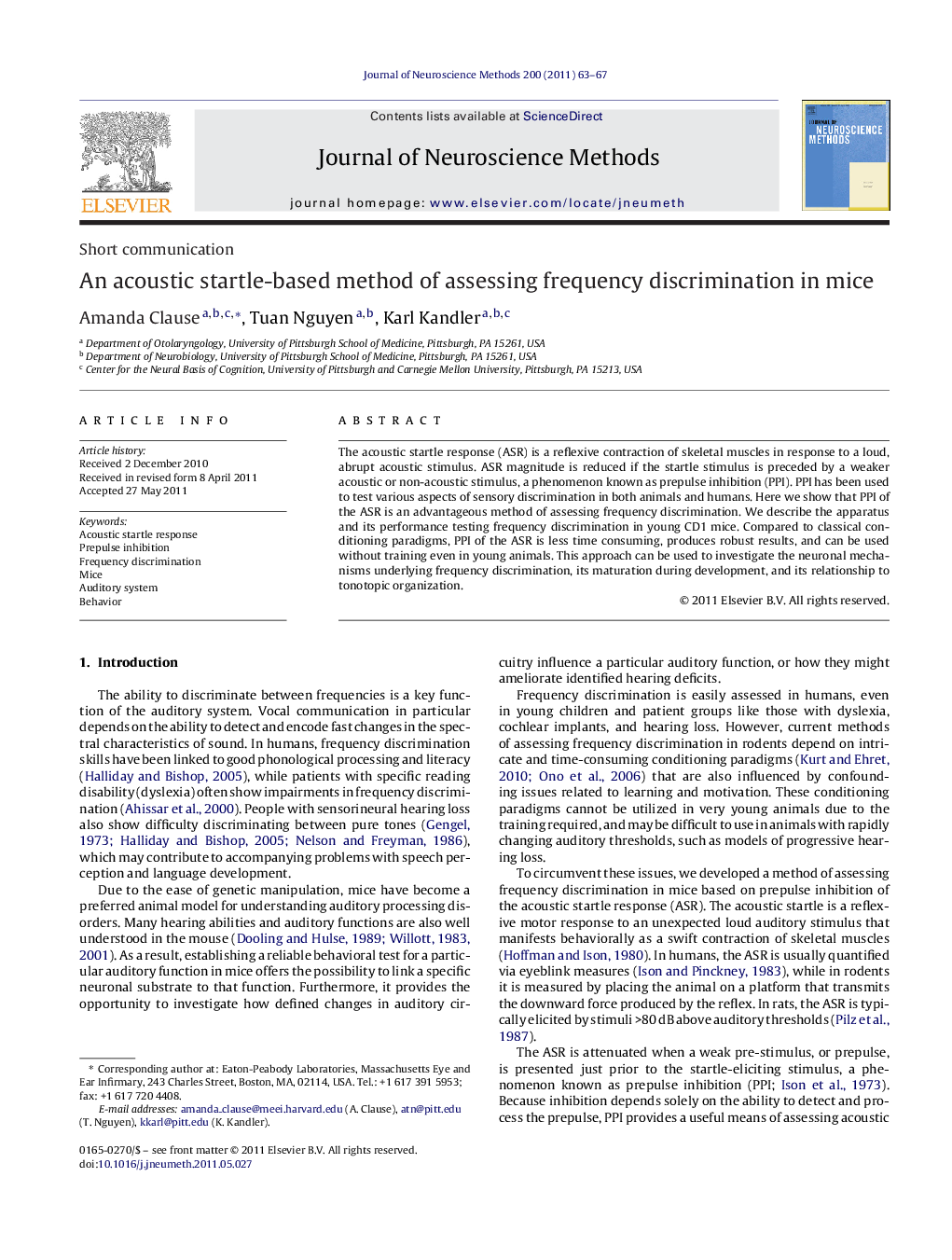| Article ID | Journal | Published Year | Pages | File Type |
|---|---|---|---|---|
| 4335362 | Journal of Neuroscience Methods | 2011 | 5 Pages |
The acoustic startle response (ASR) is a reflexive contraction of skeletal muscles in response to a loud, abrupt acoustic stimulus. ASR magnitude is reduced if the startle stimulus is preceded by a weaker acoustic or non-acoustic stimulus, a phenomenon known as prepulse inhibition (PPI). PPI has been used to test various aspects of sensory discrimination in both animals and humans. Here we show that PPI of the ASR is an advantageous method of assessing frequency discrimination. We describe the apparatus and its performance testing frequency discrimination in young CD1 mice. Compared to classical conditioning paradigms, PPI of the ASR is less time consuming, produces robust results, and can be used without training even in young animals. This approach can be used to investigate the neuronal mechanisms underlying frequency discrimination, its maturation during development, and its relationship to tonotopic organization.
